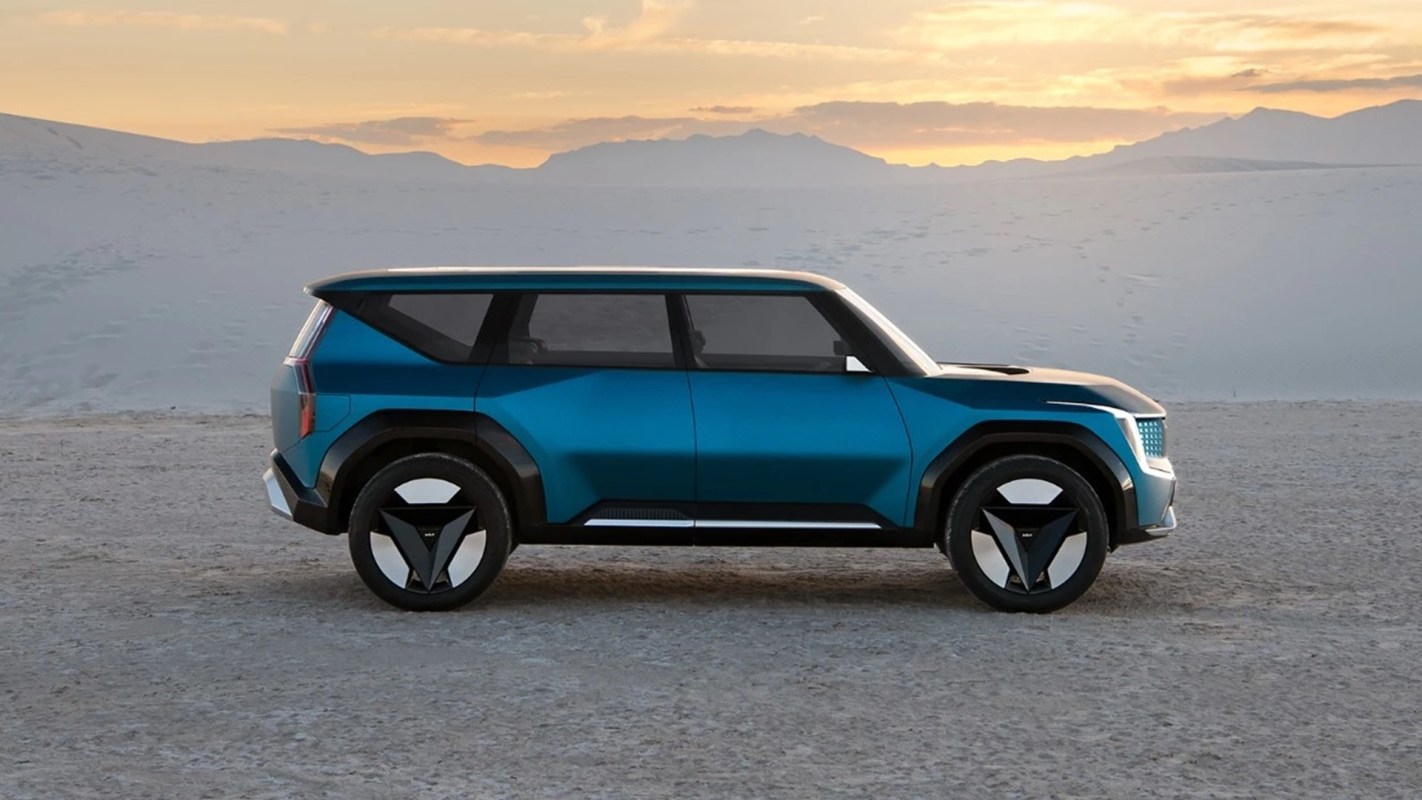Kia has unveiled details about its first electric SUV, which uses solar panels to boost its electric charge.
After debuting its first electric vehicle, the EV6, with record sales last year, Kia is launching its next groundbreaking model, the EV9, in 2023. Sales recently slowed after a strong start in South Korea due to pricing issues, with U.S. availability slated to follow before the end of the year. Because Kia will build the EV9 on U.S. soil at its production plant in West Point, GA beginning next year, buyers will be eligible for a $7,500 tax credit from the Inflation Reduction Act.
The car features a solar panel to supplement the 100-kilowatt-hour battery. Even without solar charging, the EV9 is expected to travel about 300 miles on one single charge.
The car uses the same E-GMP technology as the EV6, which increases the efficiency of electric car batteries.
Rather than adapting existing internal combustion models, the E-GMP platform is specially designed for EVs. Its chassis includes the battery, motor, and power electric system, and forgoes an engine and driveshaft to give the cabin more floor space.
The system's 800-volt capacity enables super-fast charging speeds. At the 2021 Los Angeles Auto Show, Kia teased charging speeds of up to 350 kilowatts. That means that the battery should jump from 10% to 80% in just 30 minutes.
The car also boasts a third-row capability, which can comfortably seat seven or eight adults.
EV adoption in the U.S. so far has been slow. In Europe and China, between 20% and 25% of new vehicles sold are electric. The U.S. lags behind at 5% to 7%.
But that could change as more manufacturers electrify larger vehicles. In 2022, SUVs and pickups comprised the largest share of new vehicles sold in the U.S., with SUVs making up 53.5% and trucks 19.4%.
Kia's design marks a significant step toward electrifying the U.S.'s most popular vehicle. The company aims to increase the share of eco-friendly cars in its own portfolio to 40% by 2030 with a mixture of sedans, SUVs, and MPVs.
"There were difficulties in applying new technologies and optimizing vehicle specifications, because EVs were developed based on internal combustion engine vehicles," Kim Jung-Jae, a researcher engineer at Kia, told Hyundai Motor Group. "But after we could use E-GMP, such things became possible."
"It's somewhat easier to make the physics work and the economics to box with a smaller vehicle, which requires a smaller battery," Russell Hensley, co-leader of the McKinsey Center for Future Mobility in the Americas, told McKinsey. "That is changing quite quickly."
He continued: "These types of trucks will begin to accelerate adoption, if consumers and business owners adopt them. Toward the end of the decade, about half of the new vehicles sold in the U.S., typically around 17 million units a year, will likely be powered by an electric motor and battery."
Join our free newsletter for cool news and actionable info that makes it easy to help yourself while helping the planet.









